Unveiling the Veil: A Deep Dive into the Complex World of Modern Fish Feed Production
Introduction: The Silent Engine of Global Aquaculture
Beneath the tranquil surface of aquaculture ponds, net pens in pristine fjords, and recirculating aquaculture systems (RAS) in warehouses, a silent revolution is underway. It is driven not by the fish themselves, but by the precise, scientifically-formulated pellets they consume. Fish feed is the single most critical factor—and often the largest operational cost—in modern aquaculture, accounting for up to 60-70% of production expenses. The quality, composition, and physical properties of this feed directly dictate the growth rate, health, final product quality, fish feed extruderand environmental footprint of the entire industry.
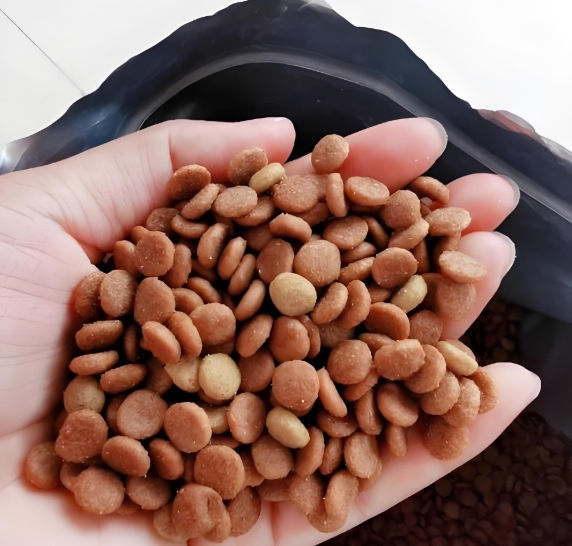
The journey from raw, terrestrial and marine ingredients to a perfectly stable, water-resistant, and nutritionally complete sinking or floating pellet is a marvel of food engineering, animal nutrition, and process control. It is a story far removed from the simplistic image of grinding up fish and throwing it to the cages. This article will pull back the curtain on this sophisticated process, fish feed extruderexploring every facet from raw material sourcing to the final bagging, and peering into the future of sustainable feed production.
Part 1: The Blueprint – Formulation and Ingredient Sourcing
Before a single machine is activated, the process begins with science and strategy. Formulation is the intellectual cornerstone of feed production.
1.1 The Science of Nutritional Requirements
Fish are not a monolith. The nutritional needs of a carnivorous species like Atlantic salmon are vastly different from an omnivorous tilapia or a herbivorous carp. Formulators, fish feed extruderarmed with degrees in animal science and aquaculture nutrition, must consider:
- Species and Life Stage: Fingerlings (fry) require extremely high protein levels (50-60%), finely ground particles, and potent immune-support additives. Grow-out feeds for mature fish focus on optimal protein-to-energy ratios for efficient weight gain. Broodstock feeds are specially designed with nutrients to enhance gonad development and egg/sperm quality.
- Protein and Amino Acids: Protein is the building block for muscle. However, it’s not just about crude protein percentage; it’s about the profile of ten essential amino acids (EAAs) that fish cannot synthesize. Lysine, methionine, and threonine are often the first limiting amino acids. The formulation must ensure these are present in the correct proportions for optimal growth. Sources include fishmeal, poultry by-product meal, soybean meal, corn gluten, fish feed extruderand increasingly, novel proteins from insects or microbes.
- Lipids and Fatty Acids: Fats are the primary energy source in fish feeds. More critically, they provide essential fatty acids (EFAs) like the omega-3 polyunsaturated fatty acids (PUFAs): Eicosapentaenoic Acid (EPA) and Docosahexaenoic Acid (DHA). These are crucial for cell membrane integrity, brain development, and, for the end consumer, the health benefits associated with seafood. While marine oils from anchovy or krill are traditional sources, the finite nature of these resources has driven the industry to incorporate terrestrial oils (e.g., rapeseed, linseed) and even genetically modified camelina oil engineered to produce EPA and DHA.fish feed extruder
- الكربوهيدرات: Fish have a limited ability to digest complex carbohydrates. However, carbohydrates like starches from wheat, corn, or tapioca play a vital functional role in the production process. They act as binders, helping the pellet hold together in water. They are also a cheap source of energy, sparing protein from being used for energy and instead directing it towards growth.
- الفيتامينات والمعادن: A complex cocktail of vitamins (A, D, E, K, C, and B-complex) and minerals (phosphorus, calcium, zinc, selenium, etc.) is essential for metabolic functions, bone development, antioxidant defense, and overall health. Vitamin C (ascorbic acid) is particularly crucial for collagen formation and immune function but is highly susceptible to degradation during processing and storage. Stable forms, such as phosphorylated or coated Vitamin C, are often used.
- المضافات: This is where feed becomes a functional, therapeutic tool.
- الأصباغ: For species like salmon and trout, the characteristic pink flesh is not natural; it comes from carotenoid pigments (astaxanthin and canthaxanthin) added to the feed. In the wild, these are obtained from consuming crustaceans.fish feed extruder
- المجلدات: Lignosulfonates or specific gums are added to enhance pellet durability, reducing fines (dust and broken pieces) that lead to nutrient loss and water pollution.
- مضادات الأكسدة: Natural (e.g., tocopherols) or synthetic (e.g., ethoxyquin, BHT, BHA) antioxidants are added to prevent the oxidation of fats, which leads to rancidity, loss of vitamins, and the formation of harmful compounds.
- Prebiotics and Probiotics: These “gut health” supplements promote a beneficial microbiome, improving feed efficiency and disease resistance.
- Phytogenics: Plant-derived compounds (e.g., from herbs, spices, essential oils) are explored for their antimicrobial and growth-promoting properties.
- Enzymes: Phytase is a common addition to break down phytic acid in plant ingredients, making phosphorus more bioavailable and reducing its excretion into the environment.
1.2 The Art and Logistics of Ingredient Sourcing
Once the nutritional matrix is defined, the procurement team takes over. This is a global endeavor, subject to commodity price fluctuations, geopolitical stability, and sustainability certifications.fish feed extruder
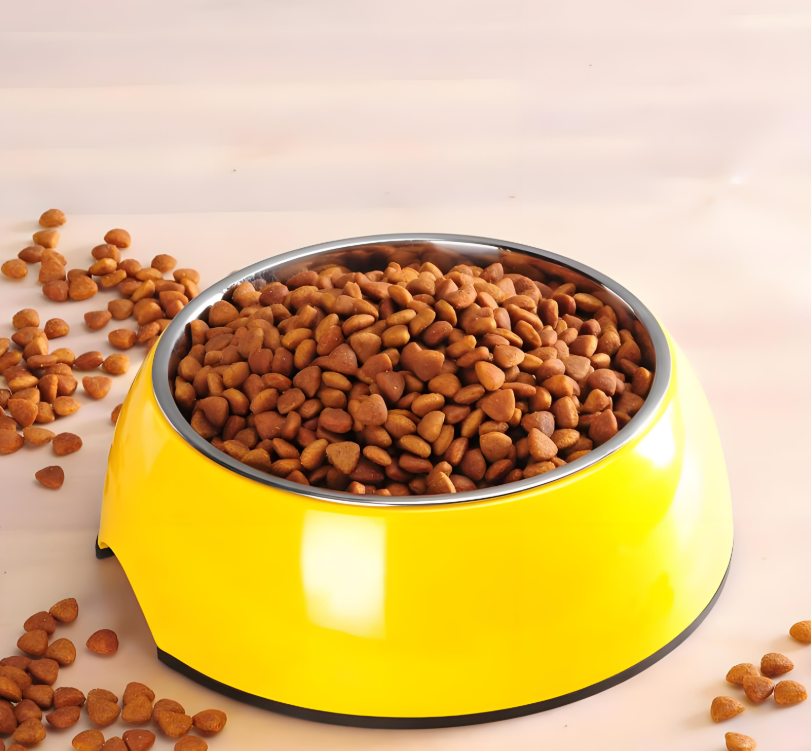
- Fishmeal and Fish Oil: The traditional backbone of aquafeeds. Sourced from small, bony, oily fish like anchoveta, menhaden, and sardines, caught in specific reduction fisheries primarily off the coasts of Peru, Chile, and Scandinavia. The industry is increasingly reliant on by-products from fish processing plants (heads, guts, frames) for a significant portion of its marine ingredients. Sustainability is paramount, with organizations like the Marine Stewardship Council (MSC) and IFFO RS (The Marine Ingredients Organization’s Responsible Supply standard) providing certification.
- Plant Proteins and Oils: Soybean meal is the workhorse of plant proteins due to its excellent amino acid profile. Others include rapeseed (canola) meal, corn gluten meal, and pea protein concentrate. A major challenge is the presence of anti-nutritional factors (ANFs) like trypsin inhibitors in soy, which must be deactivated through heat treatment (toasting) during processing.
- Novel Ingredients: The search for sustainable alternatives has spawned innovation.
- Insect Meal: Black soldier fly larvae, mealworms, and others can be reared on organic waste streams, converting low-value material into high-quality protein and fat. The chitin in their exoskeletons may also offer immune-boosting benefits.fish feed extruder
- Single-Cell Proteins: Yeasts, bacteria, and microalgae grown in fermenters can produce protein with a minimal land and water footprint. Some strains of microalgae are also being cultivated specifically as a sustainable, primary source of EPA and DHA, bypassing the marine food chain entirely.
- Quality Control at Intake: Every truck or ship-load of raw material is rigorously tested upon arrival at the feed mill. Probes are inserted to take core samples, which are then analyzed in the in-house laboratory for:
- التحليل التقريبي: Moisture, protein, fat, ash, and fiber content.
- Contaminants: Mycotoxins (from moldy grains), dioxins, PCBs, and heavy metals.
- Freshness: For marine ingredients, indicators like biogenic amines (e.g., histamine) are measured.
Only after passing these checks are the ingredients approved for unloading into designated silos or storage bays.
Part 2: The Transformation – The Manufacturing Process
This is where raw, disparate ingredients are transformed into a homogeneous, functional feed. The process can be broadly divided into two main lines: mash production and pelleting.fish feed extruder
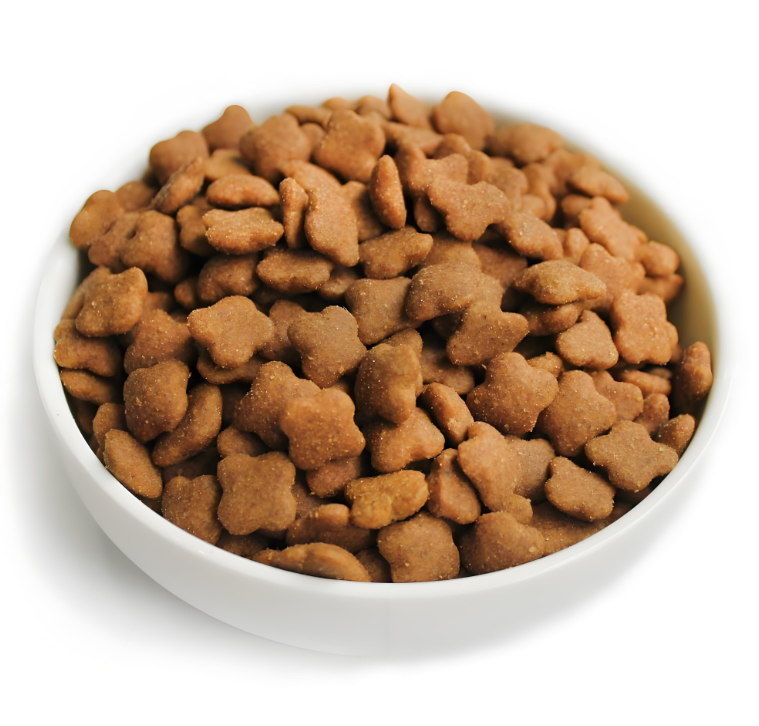
2.1 The Mash Production Line: Creating a Uniform Blend
- Step 1: Grinding (Size Reduction)
The goal is to create a uniform particle size for optimal mixing, digestion, and pelleting. Large ingredients like whole soybeans or corn are first cracked. Then, all ingredients are passed through a series of hammer mills or roller mills. Hammer mills use high-speed rotating hammers to smash particles against a screen, producing a fine, consistent grind. The size is critical: too coarse, and the pellet will be weak; too fine, and it can impair fish digestion and require more energy. The resulting powder is called “mash.” - Step 2: Weighing and Mixing (The Heart of Homogeneity)
Precisely weighed amounts of each ground ingredient, based on the master formula, are introduced into a batch mixer. This is a critical step—a single pellet must contain the exact same nutritional profile as the next. Modern mills use computer-controlled systems to automate this process, minimizing human error.
The mixers themselves are massive, often twin-shaft paddle mixers or ribbon mixers, capable of holding several tons of material. Mixing time is carefully calibrated; under-mixing leads to nutrient “hotspots” and deficiencies, while over-mixing can cause segregation of particles. At this stage, the micro-ingredients—vitamins, minerals, synthetic amino acids, and additives—are added. To ensure their even distribution, they are often pre-mixed with a “carrier” substance like rice hulls or wheat middlings in a smaller mixer before being introduced to the main batch. - Step 3: Conditioning (The Point of No Return)
The dry mash is now transferred to a conditioner. This is a long, horizontal vessel with a shaft and paddles that gently moves the mash forward while live steam is injected. Conditioning is a transformative step with multiple objectives:- الترطيب: It adds moisture (typically 4-6%), which is essential for the subsequent pelleting process.
- Heat: It raises the temperature of the mash to between 80-95°C (175-203°F).
- جلتنة النشا: The heat and moisture cause the starch granules from cereal grains to swell and burst, forming a gelatinous matrix. This natural gelatinized starch is the primary binder that gives the pellet its physical integrity in water.
- تمسخ البروتين: Heat unfolds protein structures, making them more digestible.
- Pasteurization: The heat destroys many pathogenic bacteria (like Salmonella) and deactivates anti-nutritional factors present in plant ingredients.
The properly conditioned mash should feel warm and moist, with a distinct cooked cereal smell. Its consistency is now perfect for extrusion.
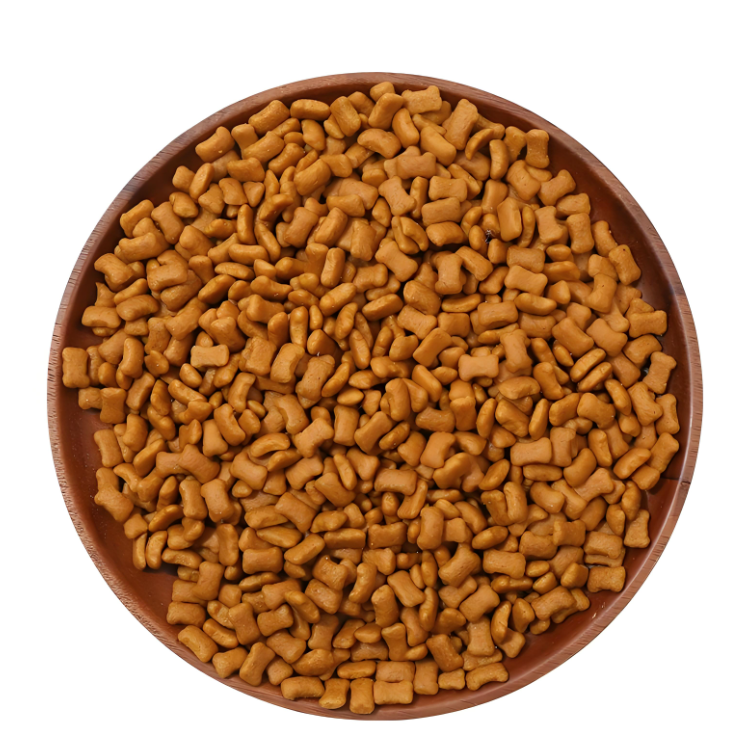
2.2 The Pelleting Stage: Shaping the Future of Feed
There are two primary technologies for forming pellets: die pelleting and extrusion. The choice depends on the species and the desired pellet characteristics.
- A. Die Pelleting (The Press)
This is a simpler, older technology used primarily for producing dense, sinking feeds for species like shrimp, catfish, and tilapia. The conditioned mash is fed into a pellet press. Inside, it is forced by rotating rollers through a thick, perforated steel die. The intense pressure and friction as the mash is squeezed through the small holes in the die further heats the material (up to 90°C) and compacts it. The strands of compacted mash are cut to the desired length by knives on the outside of the die. The resulting pellets are dense, sink rapidly, and have a relatively simple structure.fish feed extruder - B. Extrusion (The Expander)
For most modern fish feeds, especially floating or slow-sinking feeds for salmon, trout, and sea bass, extrusion is the technology of choice. It is a more complex, versatile, and energy-intensive process that offers unparalleled control over the final pellet’s properties.- The Extruder Itself: An extruder is a long barrel divided into several sections, with a single or twin screw(s) rotating inside. The conditioned mash is fed into the inlet.
- الطبخ والقص: As the screws convey the mash down the barrel, it is subjected to tremendous heat (from external jacketed heating or steam injection), high pressure (up to 40 atmospheres), and intense mechanical shear from the screws. This continues the cooking process far beyond conditioning, achieving near-total starch gelatinization.
- The Die and Expansion: The cooked, plasticized dough is forced under high pressure through a die plate at the end of the barrel, which is studded with shaped holes. The moment the material exits the die into the ambient air pressure, the superheated water within it instantly flashes into steam, causing the pellet to “puff up” or expand, much like popcorn. This creates a porous, spongy internal structure.
- Controlling Buoyancy: The degree of expansion determines whether the pellet floats or sinks. A highly expanded pellet with lots of air pockets will float for an extended period. By adjusting the recipe (starch level), process parameters (heat, pressure), and using a denser die, manufacturers can create slow-sinking or fast-sinking pellets. This is crucial for ensuring the feed is available at the water column depth where the target species feeds.
Part 3: Post-Pelleting Processes – Adding Value and Stability
The pellets exiting the extruder or press are soft, moist, hot, and unstable. They cannot be stored or used in this state. A series of downstream processes are essential.
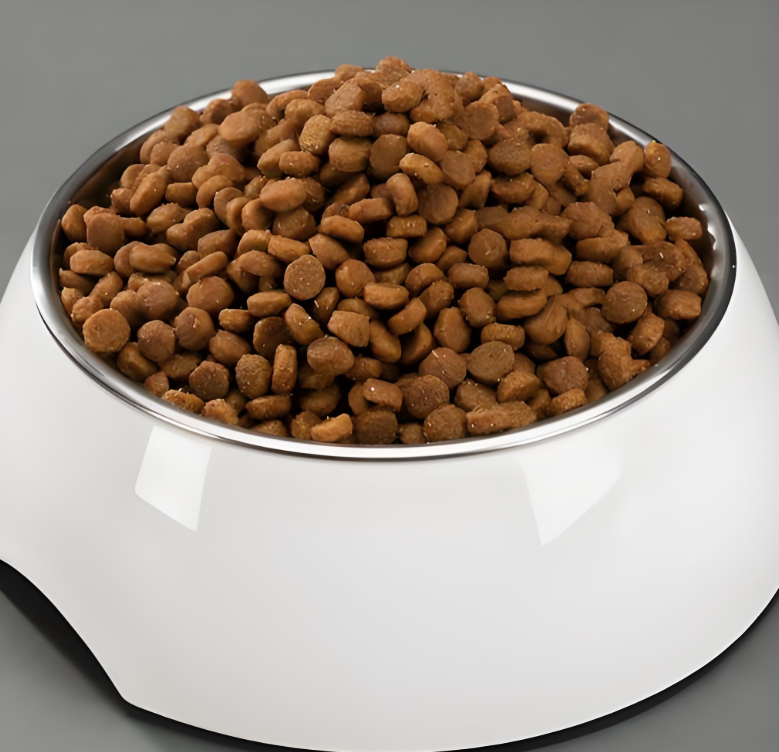
- Step 1: Drying
The hot, moist pellets (moisture ~25-30%) are conveyed to a multi-pass dryer, typically a large oven where hot air is blown through a cascading curtain of pellets. The drying process reduces the moisture content to a stable 10% or less, which is critical for preventing mold growth during storage. Drying is a delicate balance: too fast or too hot, and the pellets will crack or form a hard, impermeable “case” that traps moisture inside; too slow, and it becomes a bottleneck. The drying process also “sets” the pellet’s structure. - Step 2: Cooling
After drying, pellets are still hot (60-70°C). They are passed through a cooler, which uses ambient or slightly cooled air to bring them down to within a few degrees of room temperature. This prevents condensation from forming when they are stored in bags or bins, which would lead to caking and spoilage. - Step 3: Coating (Post-Agglomeration)
A significant limitation of the extrusion process is that heat-labile ingredients, such as vitamins, enzymes, and especially delicate lipids (fish oils rich in EPA/DHA), cannot survive the high temperatures and pressures inside the extruder. Therefore, the bulk of the oil and heat-sensitive additives are added بعد the pelleting process.
The cooled, porous pellets are transferred to a large, rotating drum or a vacuum coater.- Vacuum Coating (The State of the Art): This is the most efficient method. The pellets are placed in a sealed vessel, and a vacuum is drawn. This sucks the air out of the porous pellet structure. The liquid lipid blend (fish oil, vegetable oil, plus fat-soluble vitamins and other additives) is then introduced. When the vacuum is released, the atmospheric pressure forces the oil deep into the pores of the pellet. This allows for very high fat inclusion levels (up to 35-40% in high-energy salmon feeds) without surface oiliness, which can lead to rancidity and nutrient leaching.
- Atmospheric Coating: A simpler method where oil is sprayed onto the tumbling pellets in an open drum. It is less effective at driving oil into the pellet’s core and is prone to surface oil.
- Step 4: Screening and Bagging
The final pellets are passed over a series of vibrating screens (sieves) to separate and remove the “fines” (small broken particles and dust). These fines are pneumatically conveyed back to the mixer to be recycled into a new batch, minimizing waste.
The on-specification pellets are then transferred to storage silos or directly to the bagging line. Here, they are automatically weighed and filled into multi-walled paper bags with plastic liners, or into bulk one-ton “big bags” (FIBCs). Every bag is labeled with a batch number, production date, and expiry date, ensuring full traceability.fish feed extruder
Part 4: The Unseen Guardian – Quality Control Throughout the Process
Quality control is not a single step but a pervasive philosophy running through the entire production chain.
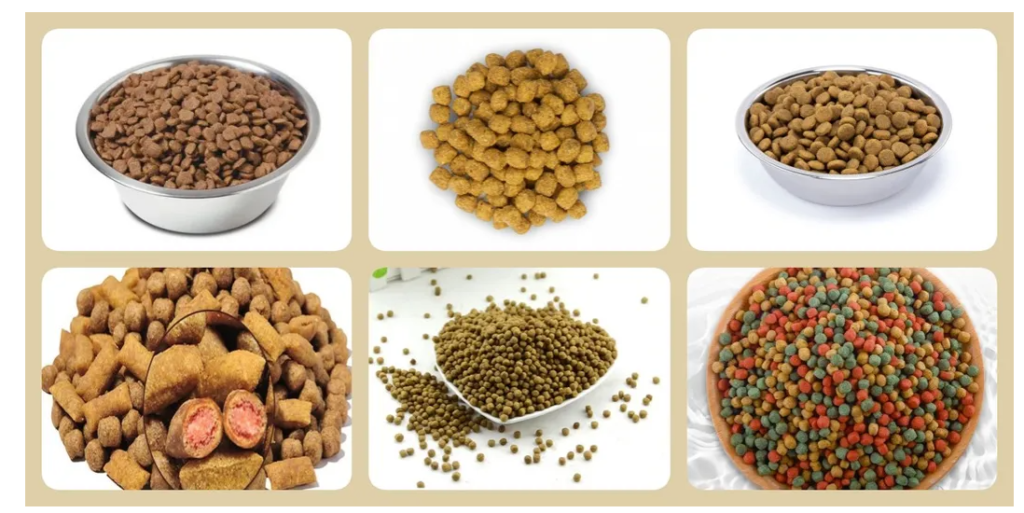
- In-Process Checks: Operators constantly monitor process parameters: conditioning temperature and moisture, extruder barrel temperatures and pressures, dryer temperatures and retention times.
- التحاليل المخبرية:
- Physical Quality: Pellet Durability Index (PDI) is measured by tumbling a sample of pellets in a standardized box for a set time and then measuring the percentage that remains intact. This predicts performance in water. Floatation tests are conducted for extruded feeds. Pellet size is verified using graduated sieves.
- الجودة الغذائية: Regular samples are taken for proximate analysis to verify they match the formulation. Near-Infrared (NIR) spectroscopy is often used for rapid, in-line analysis of moisture, protein, and fat.
- Microbiological Quality: Swabs and product samples are tested for total plate count, molds, yeasts, and specific pathogens like Salmonella and E. coli.
- Stability Testing: Feed samples are placed in accelerated aging chambers (high temperature and humidity) to predict shelf-life and ensure the antioxidants are effective.
Part 5: The Horizon – Future Trends and Sustainability Imperatives
The fish feed industry is in a constant state of evolution, driven by the need for greater sustainability, efficiency, and fish health.
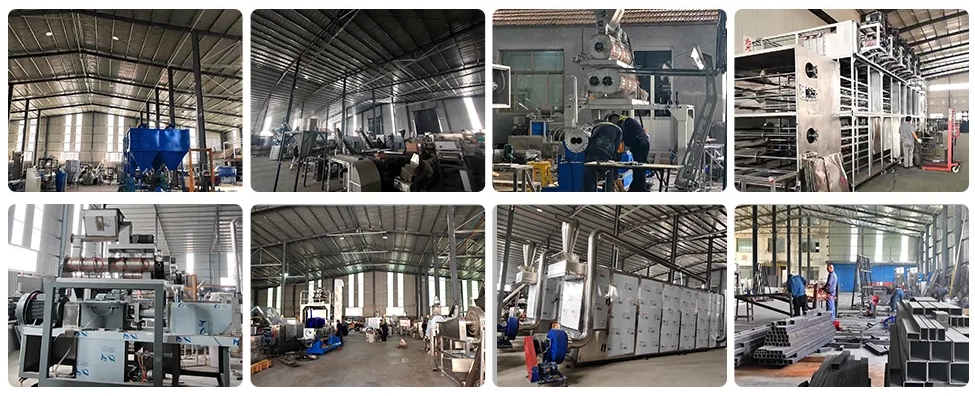
- The Quest for Fishmeal and Fish Oil Replacement: The “Fish In: Fish Out” (FIFO) ratio has been a key metric, measuring how many kilograms of wild fish are used to produce one kilogram of farmed fish. Through the use of alternative ingredients, the FIFO ratio for species like salmon has dropped dramatically, from over 7:1 in the 1990s to below 1.5:1 today. The ultimate goal is to eliminate the dependence on wild-caught fish for feed entirely.
- Novel Ingredients Go Mainstream: Insect meal and single-cell proteins are moving from niche pilot projects to commercial-scale production. The regulatory landscape is adapting to approve these ingredients for use in aquafeeds.fish feed extruder
- Precision Nutrition and Digitalization: Using AI and machine learning to create dynamic feed formulations that can adjust in real-time to changes in ingredient prices and availability. Sensors in farms can monitor feeding response and adjust ration sizes automatically to minimize waste.
- Functional Feeds for Health Management: With the reduction of antibiotics in aquaculture, feed is becoming the primary tool for disease prevention. Advanced additives like beta-glucans, nucleotides, and specific probiotic strains are being incorporated to boost innate immunity and gut health.
- Circular Economy in Aquafeeds: Using processed animal by-products, trimmings from seafood processing, and even nutrient recovery from municipal waste streams are being explored to create a more circular and less wasteful production system.
- The humble fish pellet is a testament to human ingenuity. It is a product of global supply chains, cutting-edge food science, and precision engineering. From the nutrient-rich waters of the South Pacific to the high-tech extruders of Northern Europe, the journey of its creation is a complex ballet designed to solve one of the fundamental challenges of our time: how to feed a growing global population with healthy, sustainable protein. The next time you see a salmon leap in a pen or enjoy a fillet of farmed fish, remember the immense scientific and industrial effort encapsulated in every bite, an effort that continues to evolve in the relentless pursuit of a bluer, more productive planet.







